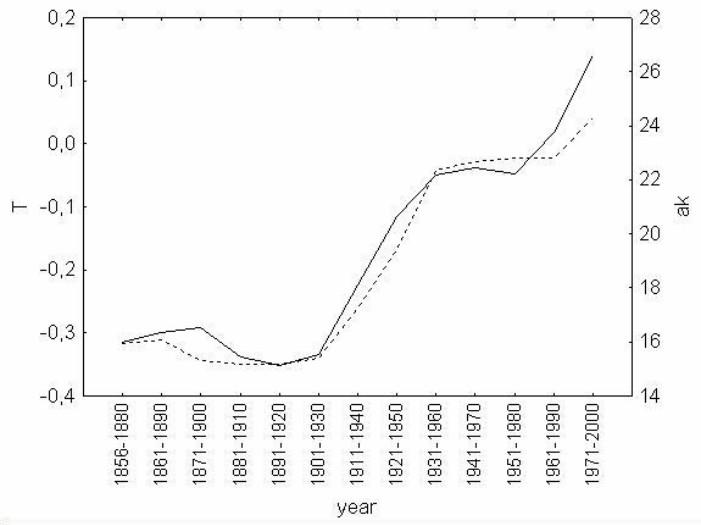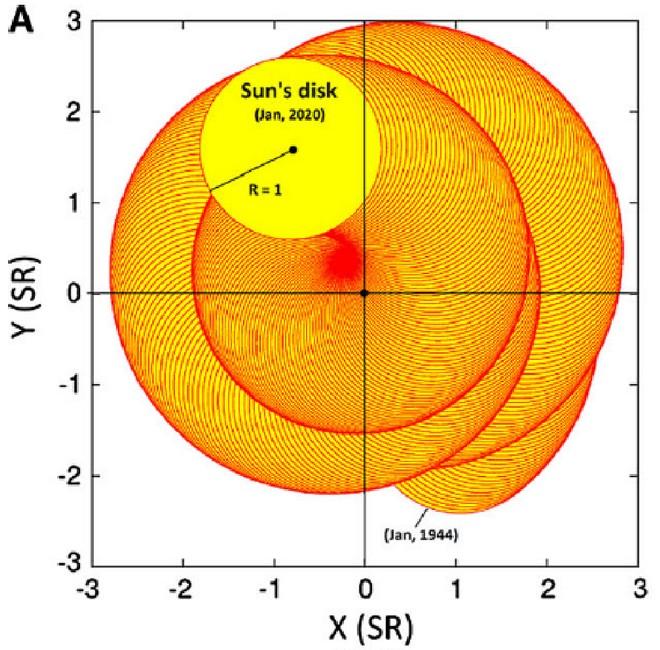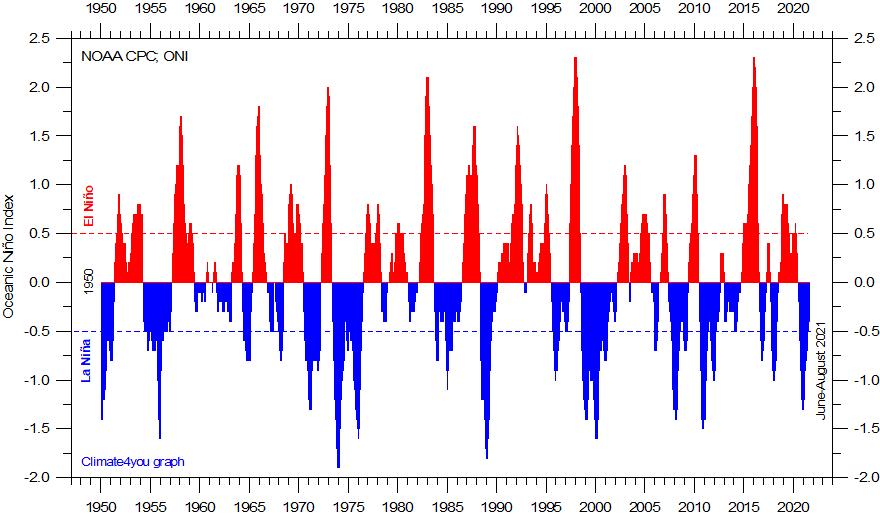
1 minute read
What components of solar radiation are changing and what is the effect?
and therefore do not appear as sunspots. They originate in coronal holes and also emit X-rays that can be converted into images by special telescopes. Adding the geomagnetic flux from coronal holes to that from sunspots (this is the geomagnetic index ak, right scale in the graph), there is an excellent correlation with global temperature trends over the last 150 years averaged over 30 years in each case - as shown in the graph above (Georgieva and Kirov, https://tinyurl.com/yy3uh96e).
5. Why do the solar magnetic field and the solar intensity change?
The most convincing hypothesis is that the gravitation of the planets (especially the heavy planets Jupiter, Saturn and Uranus, which together account for more than 90 % of the mass of all planets in the solar system) causes a constant movement of the sun and the pressure conditions in its interior. Just as the Moon causes ebb and flow in our solar system, the planets’ orbits affect the processes in the Sun's interior (e.g., the release of energy through hydrogen nuclear fusion) and the solar wind. The graph from a 2014 published paper by Prof. Scafetta shows the Sun's motion around the solar system's gravity point since 1944 (https://tinyurl.com/y5mpcdbo).

The planetary orbits modulate the solar wind and thus the climate on Earth.
6. What is the impact of ocean cycles on global temperatures?
a. El Niño Southern Oscillation (ENSO)
The graph shows the ENSO index from 1950 to 2020 (from www.climate4you.com). El Niño (Spanish for the Christ Child, because the effect is strongest around Christmas) refers to the phenomenon of wind reversal in the equatorial Pacific Ocean, which prevents the rise of cold deep water off South America and therefore strongly raises air temperatures there - with global effects. A variant of El Niño has been known for a few years. It is called El Niño Modoki and means in a positive phase a strong warming of the temperatures near the equator in the central Pacific, see 6d.











